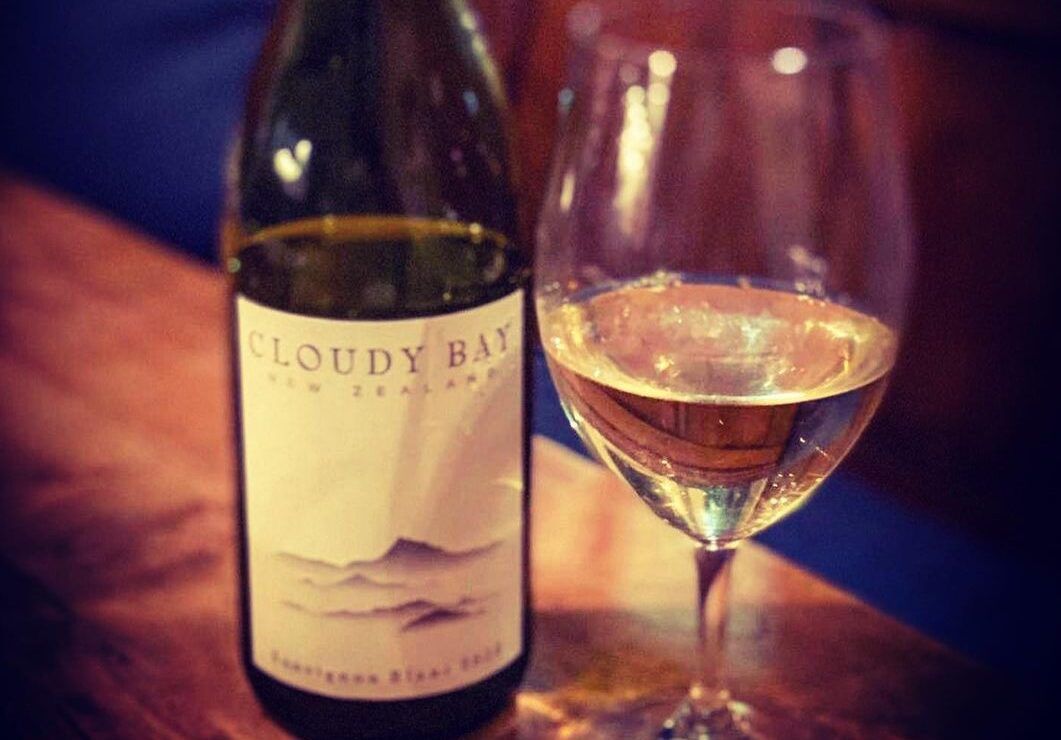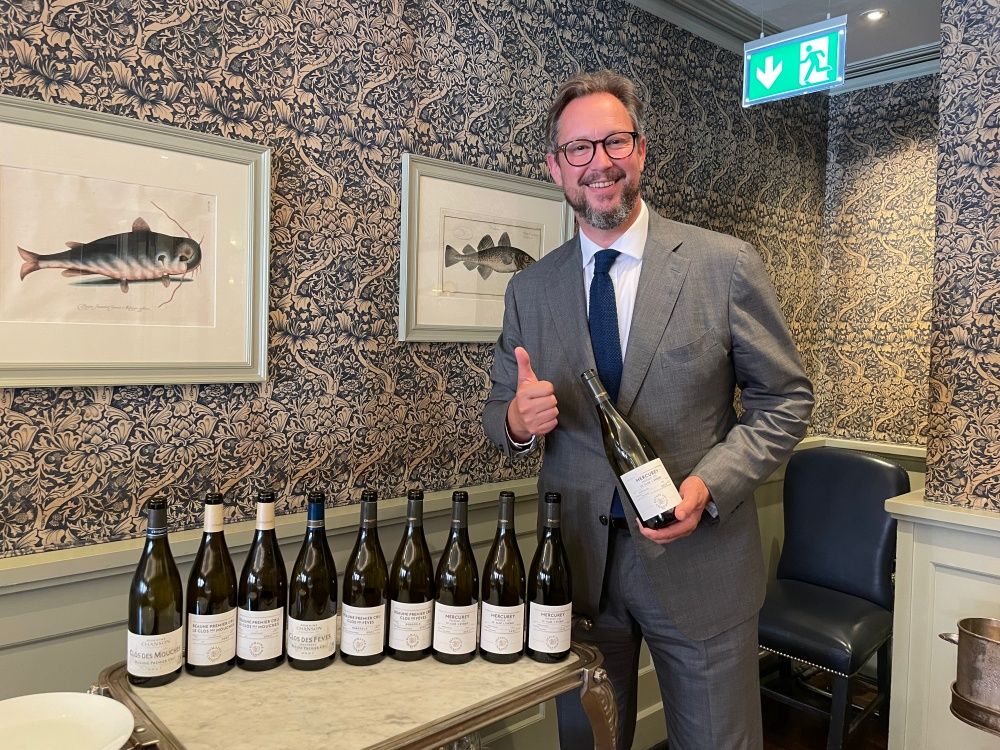“The 2020 vintage has everything I look for in Cloudy Bay Sauvignon Blanc – lashings of fresh herbs, grapefruit pith, stone fruit aromas of peach and nectarine, and beautiful balance and elegance on the palate – it just keeps giving,” Sorrell said.
After I posted my review of Cloudy Bay 2020 on social media the response to it summed up the general reception to this most iconic of Sauvignon Blancs. Amongst the large amount of impressions, engagements, Likes and Retweets, many people posted emojis of smiling faces and hearts, “My favourite!” said one and then another comment… “Lolly water”.
No matter how reliably consistent the quality of Cloudy Bay Sauvignon Blanc is, year in year out, it’s a wine that takes its fair share of bouquets and brickbats. It’s not a wine to sit on the fence about, everyone has a view about it and you either love it or you don’t. Its dictinctiveness has always had an inbuilt divisiveness – like a tutti-frutti version of Marmite.
Thirty years ago I used to buy a case every year but now I don’t – a lot of friends and colleagues my age are the same. So, with this in mind, I accepted the invitation to the tasting of Cloudy Bay 2020 to see if the wine still cuts it.
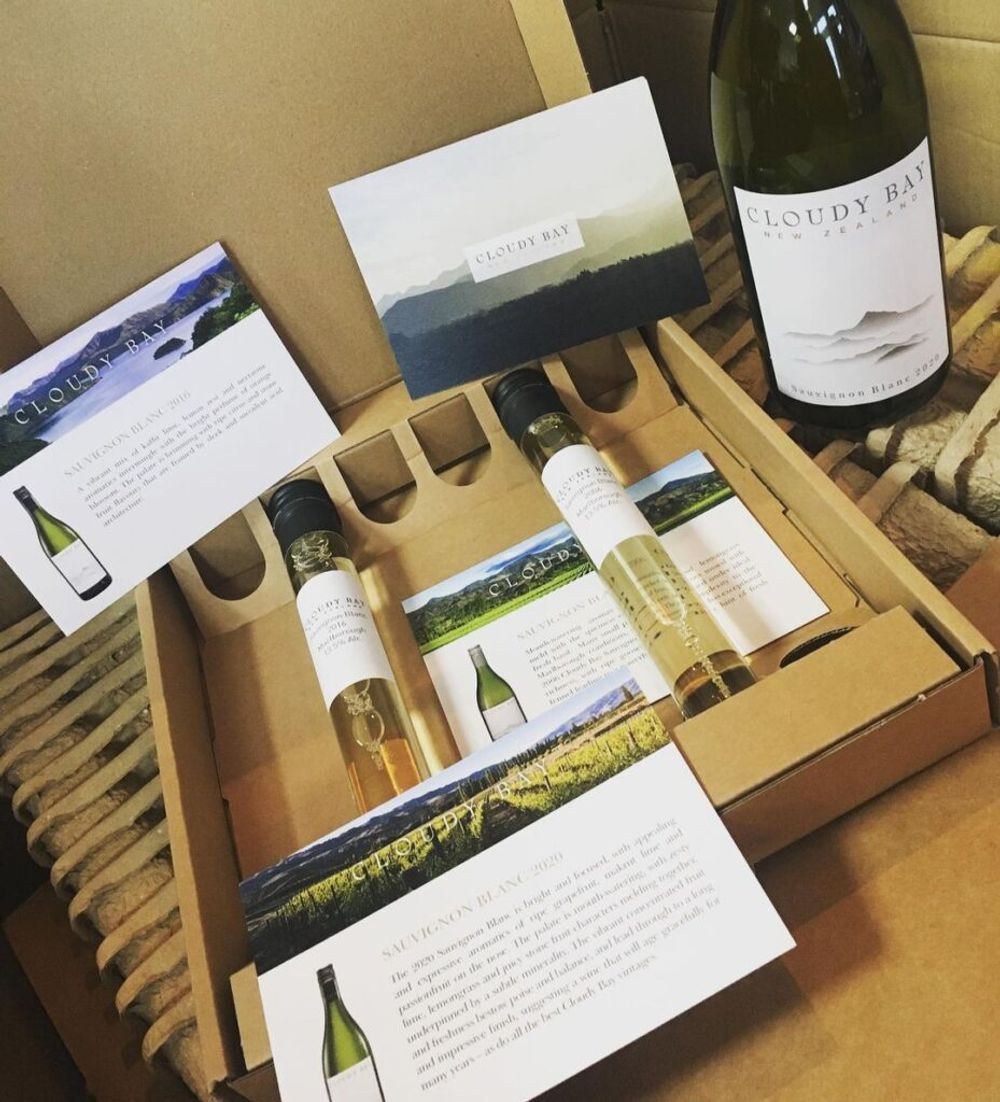
Cloudy Bay 2020 press kit – note the test tubes of 2016 and 2006 for comparison
So why does Cloudy Bay divide opinion so?
It’s pretty obvious why people love the wine. The quality of Cloudy Bay Sauvignon Blanc and the winemaking behind it are undeniable. People love it because it’s like someone exploded a fruit salad in your mouth. It is clean, crunchy, concentrated and has a fruit-forward freshness with the tropical flavours from fruit that you couldn’t find in Waitrose 30 years ago.
Every wine lover of a certain age has their ‘Kennedy moment’ with Cloudy Bay – you can remember where you were in the late 1980s when that zingy Sauvignon Blanc first hit your palate. It was like the first time you had Space Dust or finished a Sherbet Lemon and the boiled sweet took you off-guard – releasing a new, surprising rush of citrus as it dissolved in your mouth. “This is wine Jim…but not as we know it.”
In our household it was a close-run thing between whether we preferred drinking Isabel Sauvignon Blanc or Cloudy Bay, but every vintage I bought a case, along with Pelorus, the magnificent Chardonnay and the (Marlborough-grown) Pinot Noir. These wines aged well too – if you could keep your mother-in-law’s hands off them….. “Oooh! Cloudy Bay?!”
Tastes change, budgets too, and other wines graced our Saturday night dining table. For me I veered away from the tutti-frutti and got back into the Loire – Dageneau, Cotat, and countless more… now that was ‘real’ Sauvignon Blanc.
Cloudy Bay was invested in by Veuve Clicquot Ponsardin in 1990 and then became a proper part of the Louis Vuitton Moët Hennessy (LVMH) stable in 2003, a sea change from being a challenger brand to a semi-lux product. It was an ownership change that also went hand-in-hand from the wine being on allocation in our local indie to now being ubiquitous. The 2019 vintage, for example, has over 90 retailer/ importer listings in the UK alone. Cloudy Bay is New Zealand’s most successful wine brand.
For some the LVMH ownership could be an easy way to dismiss the wine – its consistency in quality and commercial awareness make it feel much more like a brand than an agricultural product which, combined with its increased visibility, make it feel too familiar and less appealing. Many serious wine lovers I know followed Kevin Judd when he upped sticks and set up Greywacke or got into neighbouring Dogpoint and the whole slew of new Savvy Blanc producers coming out of New Zealand.
It’s like when your favourite band breaks up, you follow the key creative talent. Sticking with the music analogy, you also move on when a band you’ve discovered suddenly hits fame and bangs out commercial hit after commercial hit after signing up with a major label. Maybe it’s just being a cynical Pom.
Us Brits, after all, do love an underdog and celebrate success very differently to the rest of the world. I remember a well known actor once telling me that in the States if you made a lot of money and bought a red Ferarri you’d have people come up, admire the car and say “Wow that’s beautiful, you must have worked real hard for that, well done,” but in England someone would run a set of keys down the paintwork.
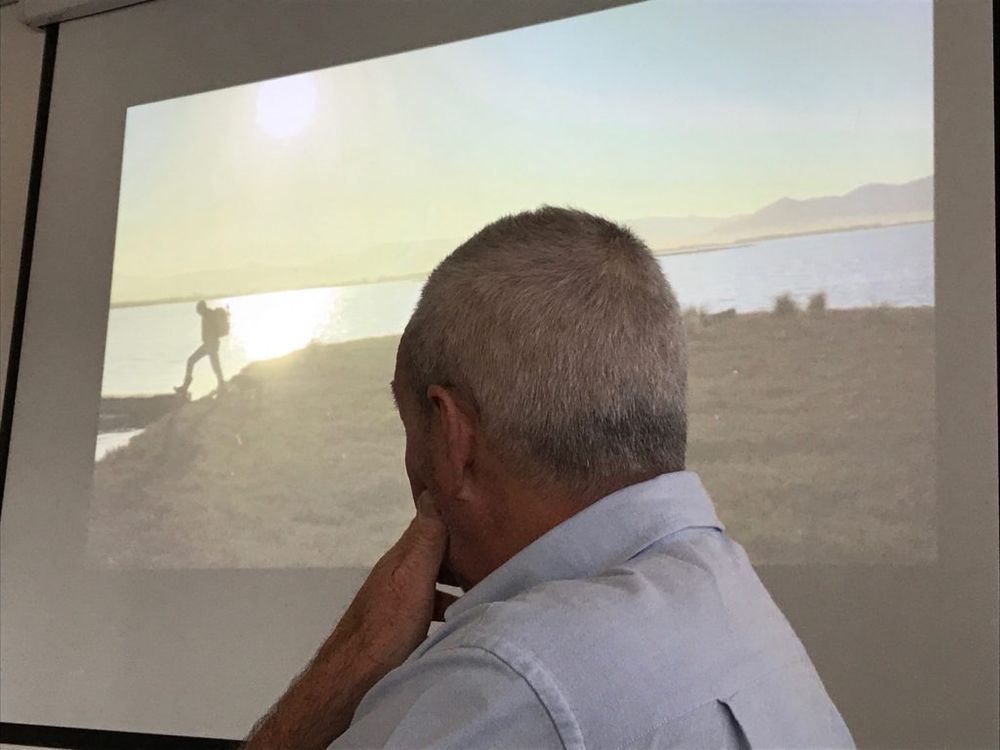
No watch on that wrist: Judd watching a video about Greywacke on its 10 year anniversary, London, January 2019
So, before we leave this line of thinking and get onto Cloudy Bay 2020, I think my favourite reason for rethinking Cloudy Bay was the leaving present it gave to its founding winemaker Kevin Judd.
When Kevin Judd finally decided to leave Cloudy Bay in 2008 and set up his own winery, Greywacke a year later, his leaving present was… a coffee machine. When he told me this two years ago Judd let that information hang in the air a bit just to sink in. Judd had been the founder winemaker at Cloudy Bay, overseen 25 vintages and put the winery (and indeed Marlborough itself) on the map.
Judd smiled wryly at the memory. “I thought I’d get a TAG (they (LVMH) make them you know) but I got a coffee machine… I’ve never worn a watch since.”
“You’d never have worn a TAG Kevin,” Judd’s wife Kimberley chipped in.
“True, but I could have sold it and bought two coffee machines!”
So what about the Cloudy Bay 2020 then?
As a vintage you will not hear one winemaker the world over say that 2020 was a good year – it was shit everywhere, let’s face it. From a viticultural point of view, however, 2020 was about as good as it gets for Cloudy Bay Sauvignon Blanc.
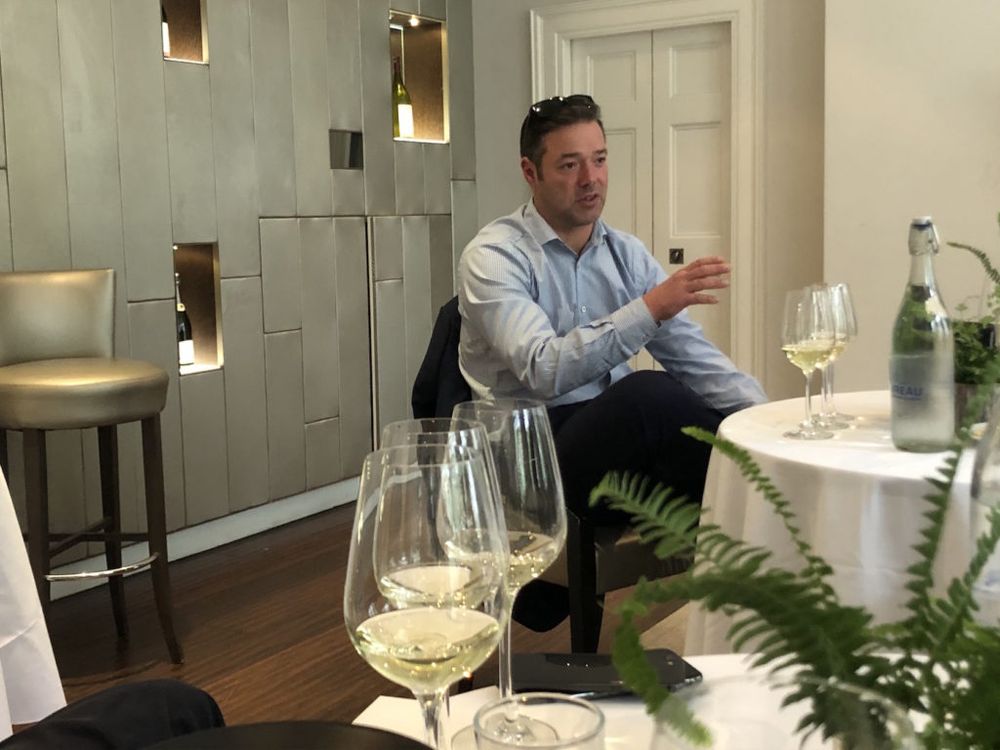
Daniel Sorrell at the launch of Cloudy Bay 2019, LVMH London HQ
“2017 wasn’t the friendliest – 2018 had its challenges – but 2020 was quite special and quite unique,” Sorrell explains on a phone call at 4am (his time). “The only saving grace this year was the quality of the harvest – Mother Nature dealt us a great hand, meaning that we could slow things down and pick when we wanted, which was a luxury. You get around 20 shots as a winemaker to make something truly special and I believe 2020 is one of those – it’s the best fruit I’ve seen in the five years since I’ve been here.”
“The 2020 vintage has everything I look for in Cloudy Bay Sauvignon Blanc – lashings of fresh herbs, grapefruit pith, stone fruit aromas of peach and nectarine, and beautiful balance and elegance on the palate – it just keeps giving,” Sorrell said.
This is the third year in a row that The Buyer has been invited to taste the new vintage of Cloudy Bay, in this case the 2020 (alongside library releases of 2016 and 2006). It’s quite a hot ticket, even amongst long-in-the-tooth wine scribes. Sarah McCleery reviewed the 2018 here and Chris Wilson reviewed the 2019 here. The underlying sentiment of both those pieces from these leading wine experts was the same – the wine is extremely well made, no question.
So what would the 2020 taste like?
The simple answer is that it was actually jolly good. The nose is intense, ripe and fruity (as you’d expect) with gooseberry ahead of lime, and fresh herbs. The initial attack is fresh, fruity with focussed acidity with quite a lot of weight and texture in the mouth, the flavours are less tutti-frutti than I remember with a savoury green pepper note, and that smash of concentrated limey-green apple acidity, that holds it all together and makes you salivate – for another sip. The wine has a lovely long finish with a twist of saline, which emphasises the freshness. The quality here is very good and there is a good degree of elegance and that distinctive Cloudy Bay mix of all those characteristics.
The wine is still a pup, of course, but the quality of fruit that Sorrell was talking about was there in spades. It felt less ‘obvious’ than I remembered but no less distinctive.
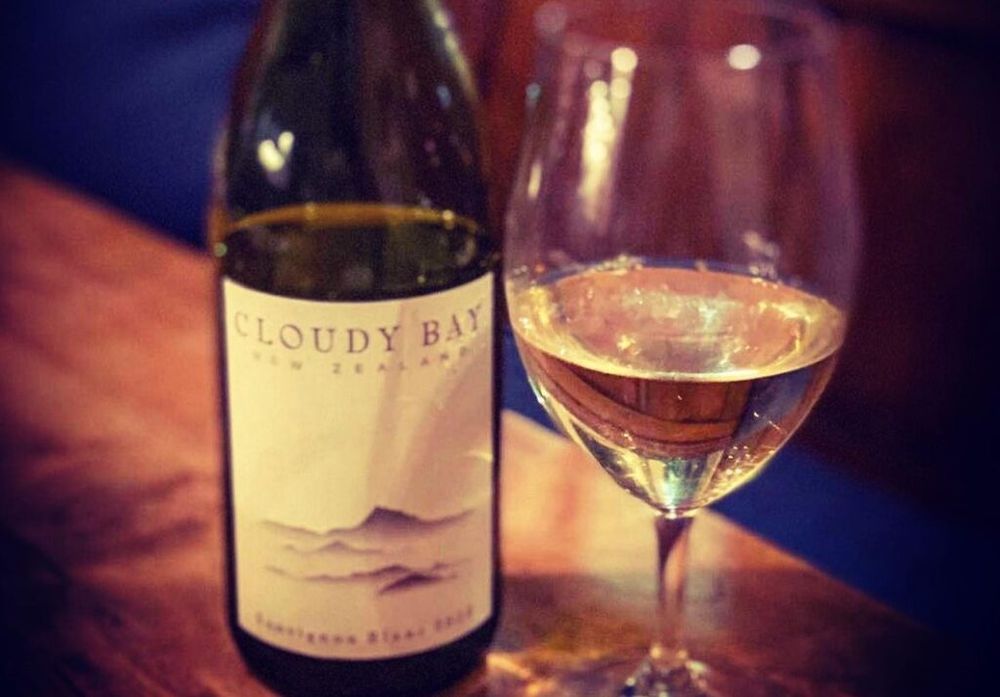
© MrVinosaurus
What chief winemaker Daniel Sorrell has been doing since taking over from Tim Heath in 2015 is concentrating on making the wine in the vineyard, ensuring the quality of the fruit is there, chasing the right thiols (the ones with a stone fruit character) and then concentrating on getting the blend right. Cloudy Bay is made from 96 different parcels of fruit across the Wairau Valley, all vinified separately, four percent was fermented in used oak barriques and vats, with the rest in stainless steel at a cooler temperature.
“Sauvignon Blanc is based around thiols – three different ones and the one we’re chasing is 3MH which has that stone fruit character – but thiols degrade very quickly,” Sorrell says. “If you don’t have good quality fruit they will start expressing green methoxys which we don’t want – after six months these will be like tinned asparagus or cat’s pee…”
So how is he practising what he preaches when it comes to Cloudy Bay Sauvignon Blanc? “Firstly we don’t pick safe, we look for that nervous quality,” he says. “We are looking for a wine which ‘smiles’ in the mouth, that’s textured and bright.”
Sorrell also confesses to constantly experimenting with blends, ferments and formats with most of these never making the cut, although he is starting to use some cement-aged fruit in Te Koko.
“Cement-ageing is exciting for Te Koko, as it brings another blending element in, and is a way to express the terroir within the blend,” he says.
Sorrell also revealed a desire to bottle a Cloudy Bay-branded single vineyard Sauvignon Blanc in order to highlight Marlborough’s sub-regional diversity.
“I’d definitely like to make a single vineyard Sauvignon Blanc, and we’re looking into it. We work with a lot of unique sites with very different micro-climates, and a single vineyard expression form one of our older vineyards would be an exciting thing to make,” he said.
